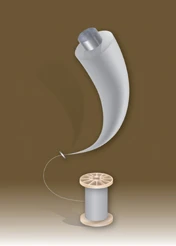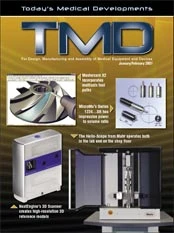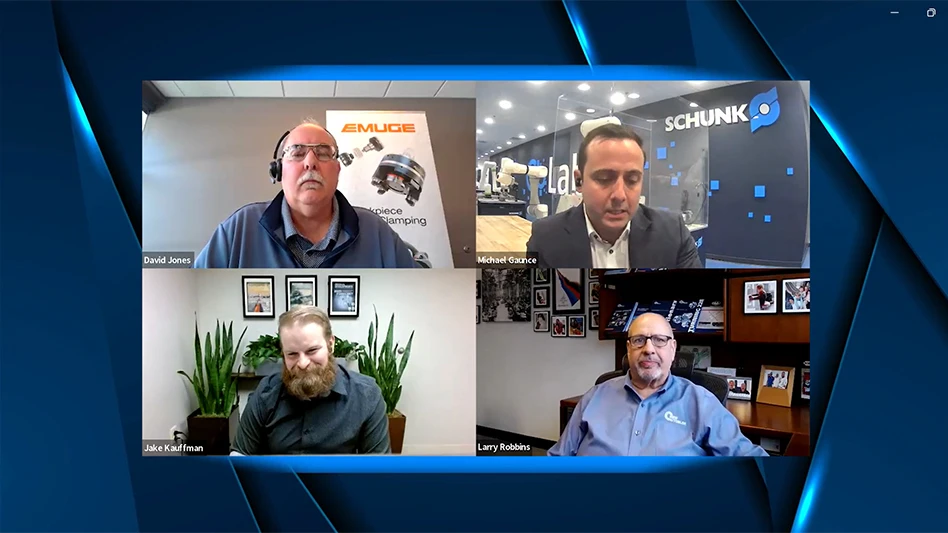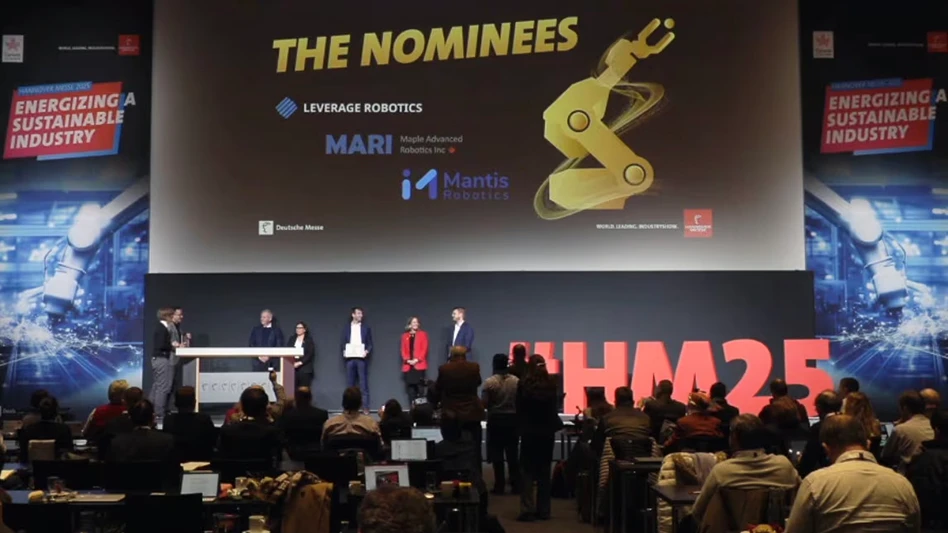
Known for its innovative designs of cutting tools, you may be surprised to learn that Sandvik also offers a complete supply concept of high-technology materials for medical and dental applications — all supported by integrated production and one of the most advanced R&D programs available to the medical products industry.
Mention the name Sandvik and instantly, the metalworking industry thinks of cutting tools and tooling systems. While Sandvik Coromant may be more recognizable, the Sandvik Tooling Group comprises a number of independent brands, with about 15,000 employees working out of nearly 70 countries. Focusing on improving the customer's profitability, Sandvik Tooling is said to develop 20 new products daily.
However, Sandvik is more than a tooling company. Its operations are divided into three main business areas: Tooling, Mining and Construction and Materials Technology. While all three business groups create added-value for the customer by delivering performance, quality and cost efficiency, the Materials Technology group is also a leader in the development and supply of high-quality materials for critical medical applications.
Because the medical industry demands materials with excellent mechanical properties, which include high levels of purity and corrosion resistance to make them biocompatible, Sandvik Materials Technology turned to its advanced R&D area to develop the Sandvik Bioline range of implantable alloys. The R&D organization combined scientific research, practical manufacturing experience and close customer contact to ensure that all products would meet the medical market's expectations and demands.
Today, this range of alloys includes all product forms required for permanent orthopedic implants, fracture management systems and coronary stents. It also includes strip, wire and tube products for making a variety of surgical tools and medical devices. A brief look at some of these products helps explain why Sandvik Bioline is quickly becoming a global supplier of materials for medical devices.
THICK WALL TUBES
Thick wall tubes for the production of cannulas, bone nails and heavy-walled screws are made to meet extremely rigorous demands. This tubular material is a specialty of the Sandvik manufacturing unit, based in Werther, Germany. The production range is between 6.0mm and 25.4mm outside diameter and wall thicknesses up to 8mm. It comes in two grades for implants - Sandvik Bioline 316LVM (ISO 5832-1) and Sandvik Bioline High-N (ISO 5832-9).
These high-purity steels display a homogeneous structure and a high resistance to intergranular corrosion, stress corrosion cracking, as well as pitting and crevice corrosion. In addition to high cleanliness, key material properties such as fatigue strength under reverse bending stretches, and consequently the avoidance of material fatigue, are achieved by intensive cold working processes.
The processes also ensure extremely smooth inner and outer tube surfaces with minimum surface roughness and imperfections. Tubes can be supplied in the cold finished, bright annealed or ground conditions. Tolerances are provided in accordance with customer requirements, although typically outside diameters and inside diameters are produced to 0.04mm (0.0016 in.), with an eccentricity of 5% maximum.
THIN WALL TUBES
At the other end of the tubular product range, Sandvik produces thin wall tubes for the manufacturing of surgical instruments, biopsy punches and cardiac stents. Tube sizes range from 0.25mm up to 50.8mm outside diameter and from 0.045mm up to 2.85mm wall thickness - primarily in the steel grade Sandvik Bioline 316LVM.
STAINLESS ALLOY AND COATED WIRE

The Sandvik family of stainless steel, special alloy and coated wires complies with all internationally recognized standards and is widely used for: pacemaker and ICD leads, guide wire systems, catheter reinforcement, sensor wires, heart mapping devices, cardiac stents and skin piercing applications.
Manufactured at facilities in the United States and in Europe, all wire products are produced with high cleanliness and close dimensional tolerances. A wide range of material grades is available, including Sandvik Bioline 304V, which is a vacuum remelted, austenitic stainless steel.
COATED WIRE
The primary use for polymer coated, precision medical wire is in sensor applications in vivo diagnostic and in therapeutic procedures, where electrical signals or currents are conducted micro-invasively. Key product features of the Sandvik Bioline range include small diameter (approx. 0.001 in.) variety of polymer coatings, offered either as standard or as custom-coated to precise requirements and specifications. The extremely thin coatings, applied in a uniform and pinhole-free way, guarantee excellent electric isolation properties. Typical end use applications include heart mapping devices, blood pressure and temperature measuring equipment, tissue temperature sensors and brain sensors.
While many of these applications did not exist five to ten years ago, developments in coating technology, coupled with the cooperation between device manufacturers and material suppliers, has resulted in improved product performance, reduced trauma and new product features, allowing medical procedures that were not previously possible.

All applications demand specific material properties, both in the wire and in the coating. The Sandvik Bioline program offers a wide range of material grades and Polyimide, Polyamide, Polyethylene, FEP and PTFE coatings.
NEW PRODUCT OPPORTUNITIES
Recent investments in new production processes give Sandvik the ability to supply stainless steel catheter braiding wire in fine, round and ribbon.
Key potential benefits of braiding catheters include control of torque, kink, pressure resistance, stiffness and pushability.
In addition, a new metal-to-metal composite, Sandvik Bioline Cored Wire, used in pacemaker and defibrillator leads, has also been launched. The new wire combines the optimum mechanical and physical properties of two materials.
It is designed with an outer Cobalt/ Nickel/Chromium/Molybdenum alloy (MP35N) tube and a pure silver core. While the outer component has excellent biocompatibility and fatigue properties, the inner silver core provides high electrical efficiency, electrical conductivity and low resistance. The new wire requires several drawing and annealing processes to achieve the finished sizes and material properties.
Typically the silver core represents 25% of the cross-sectional area, and the outer wall represents 75%. The ratio can be tailored to customer requirements, depending on the wire diameter and the product performance characteristics required. The flexibility of Sandvik's production capability offers design advantages and opportunities for pacemaker, defibrillator and neurological implant lead manufacturers to make smaller and more efficient lead wires.
Improved conductivity provides the potential for reducing wire diameters and developing multi-channel leads for improved performance. Furthermore, multiple cored wires can be individually insulated and then collectively insulated to significantly increase the functionality of the lead-wire bundle.

Sandvik Bioline Cored Wire is available in sizes ranging from 0.001 in. up to 0.005 in. in diameter for both round and flat wire product forms. Alternative cores, such as gold, platinum, tantalum, tungsten or other alloys can be developed and wire can be supplied with any of the standard wire coatings.
RESEARCH & DEVELOPMENT
Strong goal and market-oriented research and development and close cooperation with customers are core business concepts of Sandvik. This translates into Sandvik Bioline being supported by one of the most advanced R&D programs available to the medical products industry.
Sandvik Bioline 1RK91 stainless steel is an example of pure materials research developing into a marketable product. This specially developed stainless steel offers particular benefits to the medical device industry and represents a considerable investment by Sandvik in research and development.
The steel combines exceptional strength with good ductility. It is finding wide application in wire product form for the manufacturing of ophthalmic, plastic surgery and general suture needles. The high strength of Sandvik Bioline 1RK91 is achieved by age hardening, meaning that products can be formed in the soft condition prior to developing the final and desired strength. Sandvik Bioline 1RK91 is available in wire and strip form. It is corrosion resistant, good for repeated sterilization, has good edge retention properties for blades and cutting tools, has an excellent surface finish and offers the potential for lighter devices to be produced.
Developed as a medical grade material, cytotoxicity testing by customers has confirmed that Sandvik Bioline 1RK91 does not possess any cytotoxic potential, and can therefore be safely used in contact with human tissue, fluids or blood. It also meets all necessary standards and tests for its lack of allergy and skin irritation potential.
Sandvik Bioline products are sold and marketed through Sandvik sales companies around the world and through two major and dedicated sales, marketing, and distribution centers - Sandvik Bioline - NAFTA, based in Scranton, PA, and Sandvik Bioline - UK, based in Sheffield, UK.
Sandvik Bioline - NAFTA
Sandvik Materials Technology
Scranton, PA
www.smt.sandvik.com/bioline

Explore the January February 2007 Issue
Check out more from this issue and find your next story to read.
Latest from Today's Medical Developments
- The role of robotics in precision medical device manufacturing
- Swiss Steel Group’s UGIMA-X machinable stainless-steel sets
- #51 - Manufacturing Matters - The Impact of M&A in MedTech 2024
- Visual Components: 25 years of simulation and programming software innovation
- Zimmer Biomet announces definitive agreement to Acquire Paragon 28
- Discover an innovative technology for EMI/ESD/TVS suppression
- Teleflex to acquire BIOTRONIK’s Vascular Intervention business
- Innovation at Global Industrie 2025





